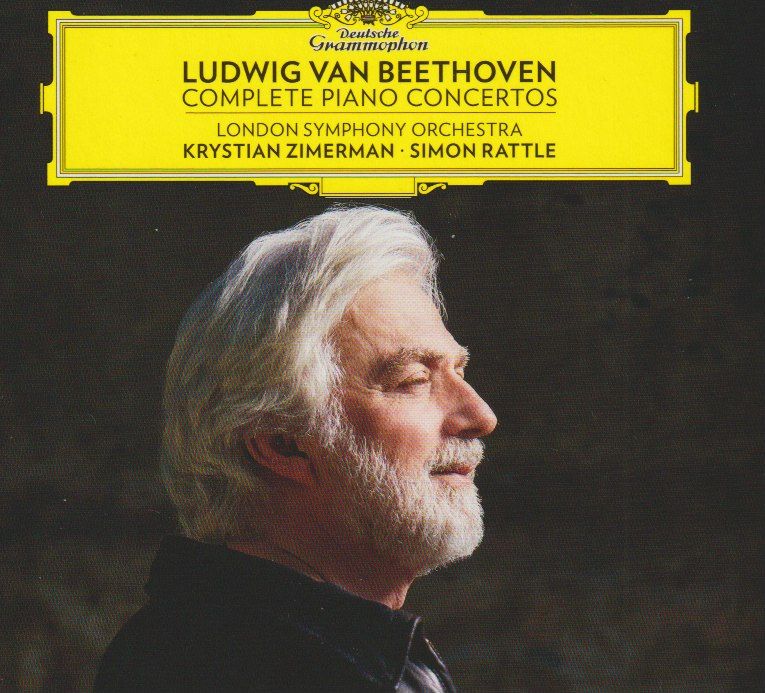Beethoven from Krystian Zimerman and Simon Rattle
Krystian Zimerman is one of the last great pianists to cultivate an aura of mystery ...

Krystian Zimerman is one of the last great pianists to cultivate an aura of mystery. He travels with his own piano, his recordings are few and far between and always for the "Yellow label" (Deutsche Grammophon). So the arrival of a set of Beethoven concertos is cause for celebration indeed.
He is joined by the London Symphony Orchestra and Sir Simon Rattle.
The performances have an inbuilt sense of knowing about them. From teh very first string entry at the beginninng of teh First Concerto, we know all will be well. Zimerman plays the second cadenza (of three Beethoven wrote) in the First concerto. Not the longest (that's the third one) but Zimmerman gives it more variety and indeed gravitas than any performance I've hard:
The miracle of Zimmerman and Rattle's slow movements is that they give the music space yet don't sound in any way old-fashioned (pre-HIP!).There's a perennial depth of emotion and freshness; and talking of freshness, listen to the sparkle in the finale of the First Concerto:
The Second Concerto (B flat, Op. 19) was actually composed first (but published second, hence the numbering). If anything it is sprightlier, but Zimmerman and Rattle again find new depths, even in in that first movement. As with the Third Concerto, there's only one cadenza by Beethoven for this concerto, and indeed that's what Zommerman plays. Arguably the slow movement here is a tad too expansive, but there is so much to enjoy regardless:. It really is the prescribed "Adagio":
The finale balances this beautifully, with passages of sudden profundity in amongst the rondo-energy. As always with Zimerman, every note is carefully considered and yet his consideration oft he whole is beyond reproach.
The Third Concerto really marks the beginning of the mature Beethoven. The hush of the C minor arpeggiated opening followed by that descending part-scale . Rattle's handling of the orchestra is brilliantly done, each detail audible, and it's no surprise to hear Zimerman in perfect accord:
The cadenza in this concerto is often criticised as its weakest part, but not here. Do listen to the track above to its conclusion - Zimerman sculpts the cadenza with stunning dynamism and beauty. Not since Pollini/Böhm (also DG) has the F minor triplet section had such fire! Here's Pollini in Beethoven Third in that very performance, complete:
The sheer beauty of Zimerman's slow movement leads to one of the most technically perfect and yet exciting finales there is of this concerto:
This now becomes my reference performance of the Third ....
When it comes to the Fourth Concerto, it is the first, gentler cadenza that Zimerman opts for. This is a beautiful account of the Fourth Concerto, the LSO strings at their silken best:
This is one of those sets where it is impossible to state a "finest" performance but if there is one, it is the "Emperor". Magisterial is a much over-used word in critical circles, but how it fits here (and a words for the recording - the string pizzicatos against a powerful piano are absolutely perfectly audible and just perfect within the sound-image, while the bassoon contribution rarely makes its mark so effectively):
Zimerman's control of the piano in the slow movement is miraculous. Previously, it had been Brendel who was the master of the controlled pianissimo line here (both in his various recordings and when I heard him live) but Zimerman is entrancing. There are some instances of audible vocalisms on top range headphones, presumably from Zimerman, but with magic like this it hardly matters:
The "Emperor" finale bursts forth from that slow movement like a blaze of light. What a way to finish the set - and this article! - in a demonstration of why music-making of this calibre matters so much: how it can rouse us, stir us, inspire us ..
